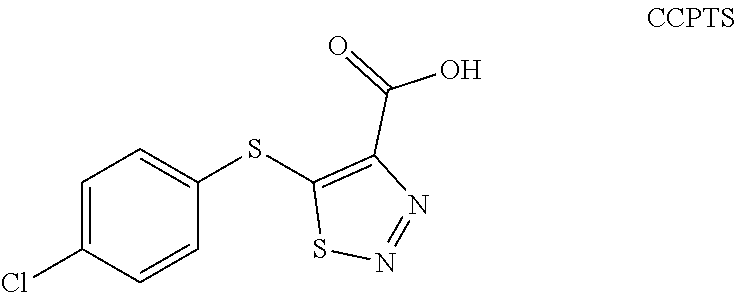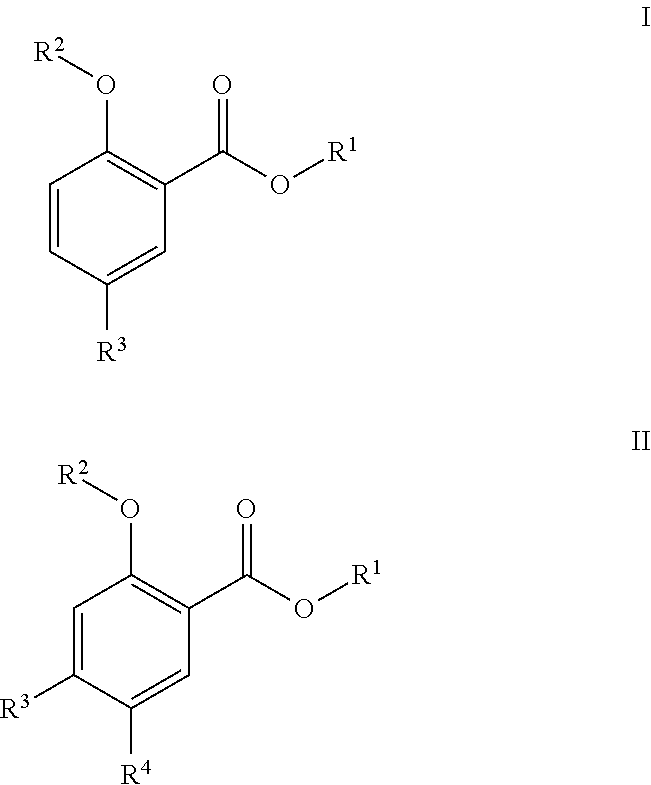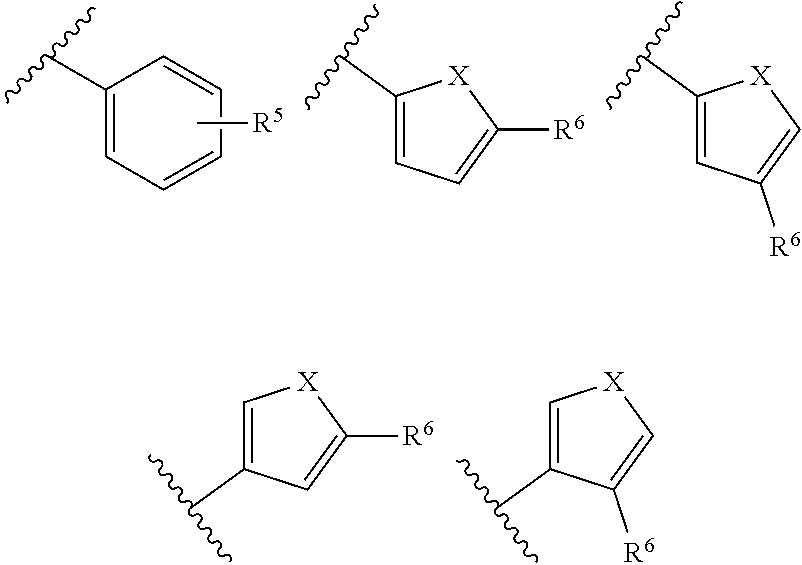Compounds for the treatment of diseases caused by oxalate accumulation
a technology of oxalate and compound, which is applied in the field of compound for the treatment of diseases caused by oxalate accumulation, can solve the problems of reducing no effective pharmacological treatment for hyperoxaluria, and patient's death, so as to reduce the excretory capacity of the kidney and inhibit the activity of the go and prodh2 enzym
- Summary
- Abstract
- Description
- Claims
- Application Information
AI Technical Summary
Benefits of technology
Problems solved by technology
Method used
Image
Examples
embodiments
[0099]The following examples are provided by way of illustration, and are not intended to limit the present invention. A selection of compounds which have been prepared and / or biologically evaluated are indicated in Table 3. Table 4 further indicates the EC50 found for the reduced production of oxalate in Agxt1-KO mouse hepatocyte cultures.
Methods of Biological Evaluation
[0100]Development of AGXT and GO enzyme-deficient mice: The AGXT-deficient mice have previously been described. The GO-KO mice were obtained according to the method described in the literature.
[0101]Isolation and culture of hepatocytes: The isolation of hepatocytes from AGT enzyme-deficient mice was carried out as described in the literature. A total of 3.0×105 cells / well were then cultured in 6-well plates in William's E medium supplemented with foetal bovine serum (5%), I-glutamine (2 mM), penicillin (100 U / ml), streptomycin (100 μg / ml), insulin (2.2 mIU / ml) and hydrocortisone (0.3 μg / ml). Af...
PUM
| Property | Measurement | Unit |
|---|---|---|
| time | aaaaa | aaaaa |
| time | aaaaa | aaaaa |
| pH | aaaaa | aaaaa |
Abstract
Description
Claims
Application Information
 Login to View More
Login to View More - R&D
- Intellectual Property
- Life Sciences
- Materials
- Tech Scout
- Unparalleled Data Quality
- Higher Quality Content
- 60% Fewer Hallucinations
Browse by: Latest US Patents, China's latest patents, Technical Efficacy Thesaurus, Application Domain, Technology Topic, Popular Technical Reports.
© 2025 PatSnap. All rights reserved.Legal|Privacy policy|Modern Slavery Act Transparency Statement|Sitemap|About US| Contact US: help@patsnap.com



